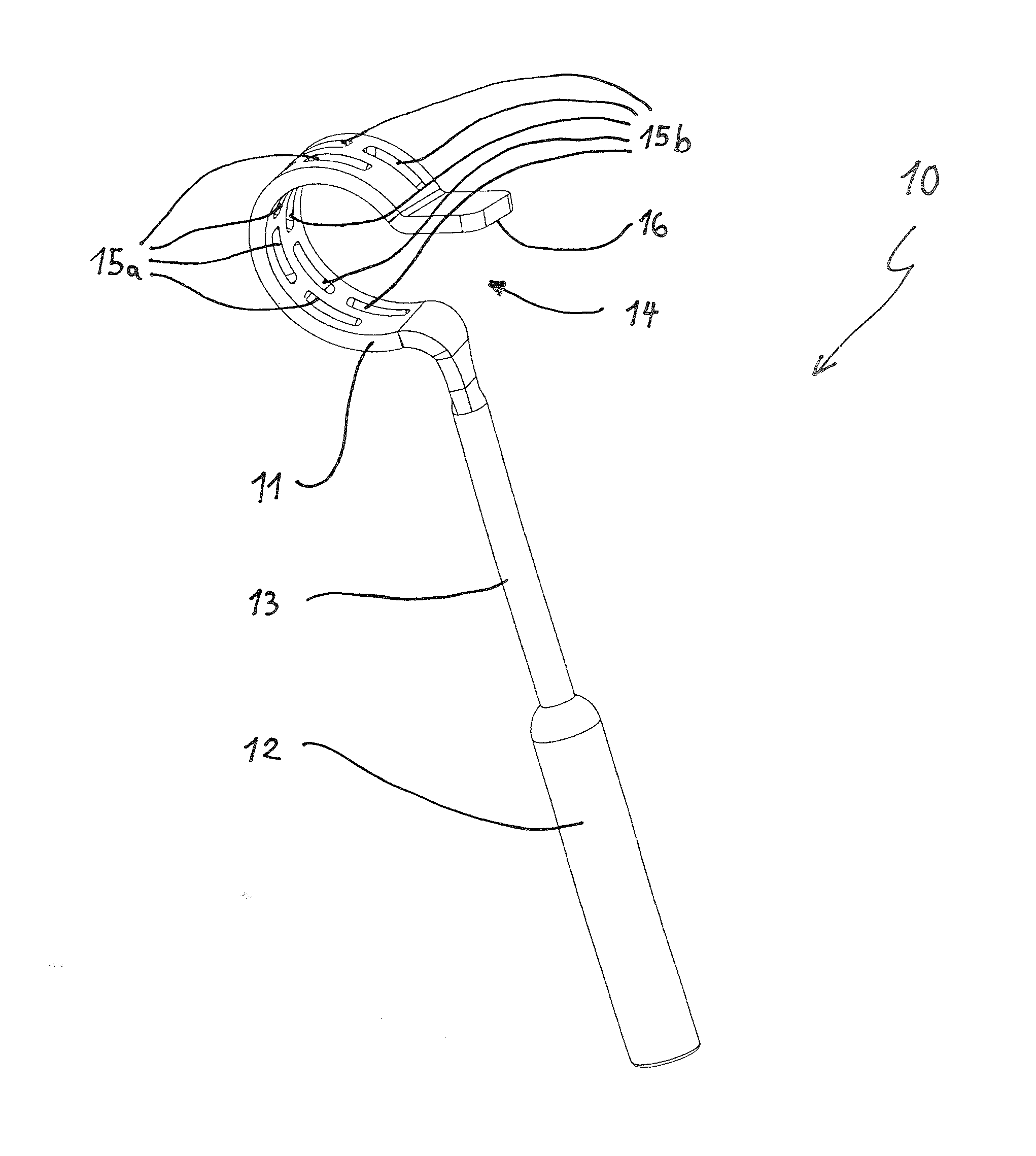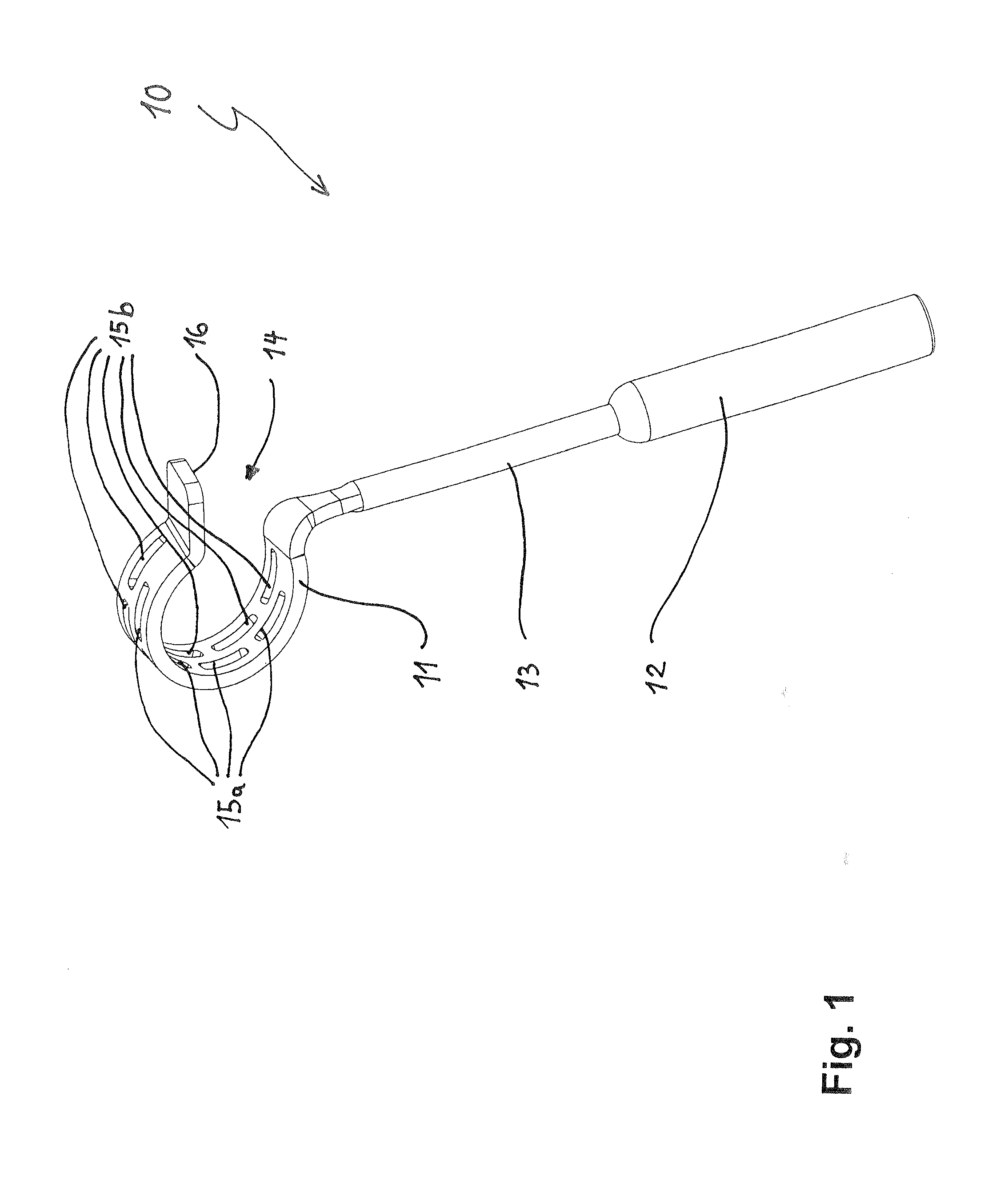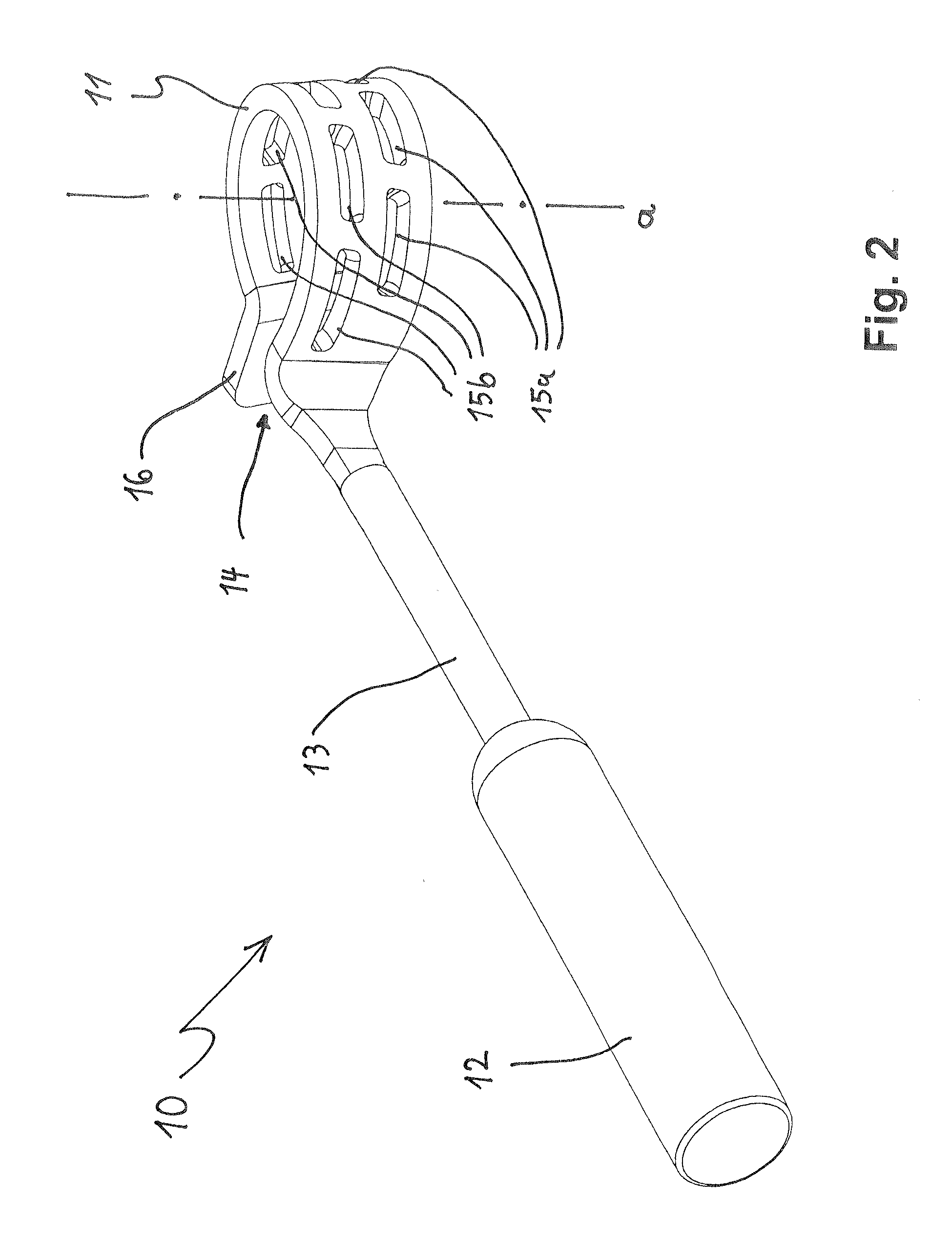Ossicular prosthesis having a longitudinally perforated bight
a transversely perforated, prosthesis technology, applied in the field of passive ossicular prosthesis, can solve the problems of serious inner ear damage, the closing process is still considered the most difficult part of the middle ear operation, and the loss of hearing, so as to reduce the pressure peak and uniform stiffness of the first coupling element
- Summary
- Abstract
- Description
- Claims
- Application Information
AI Technical Summary
Benefits of technology
Problems solved by technology
Method used
Image
Examples
Embodiment Construction
[0050]The following is a detailed description of example embodiments of the invention depicted in the accompanying drawings. The example embodiments are presented in such detail as to clearly communicate the invention and are designed to make such embodiments obvious to a person of ordinary skill in the art. However, the amount of detail offered is not intended to limit the anticipated variations of embodiments; on the contrary, the intention is to cover all modifications, equivalents, and alternatives falling within the spirit and scope of the present invention, as defined by the appended claims.
[0051]FIG. 1 depicts an ossicular prosthesis 10 according to the invention, which comprises a shank-shaped, elongated, sound-conducting prosthesis body 13, which comprises a first coupling element 11 at one end. The first coupling element 11 is designed in the form of a bight made of a strip-shaped metallic material. The bite encloses the desired component of the ossicular chain or the actu...
PUM
 Login to View More
Login to View More Abstract
Description
Claims
Application Information
 Login to View More
Login to View More - R&D
- Intellectual Property
- Life Sciences
- Materials
- Tech Scout
- Unparalleled Data Quality
- Higher Quality Content
- 60% Fewer Hallucinations
Browse by: Latest US Patents, China's latest patents, Technical Efficacy Thesaurus, Application Domain, Technology Topic, Popular Technical Reports.
© 2025 PatSnap. All rights reserved.Legal|Privacy policy|Modern Slavery Act Transparency Statement|Sitemap|About US| Contact US: help@patsnap.com



